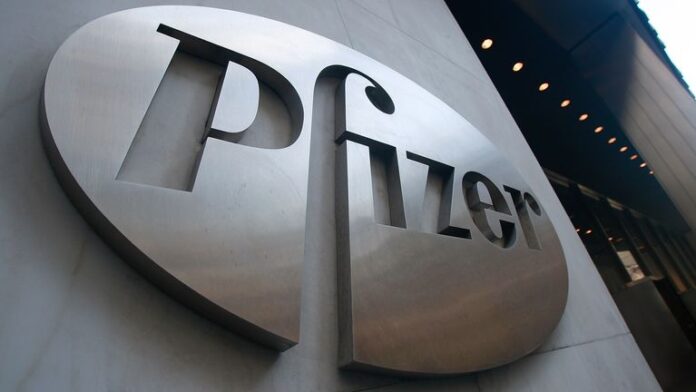Pfizer, one of the world’s leading pharmaceutical companies, has announced an increase of $1 billion to its 2024 revenue outlook. This decision comes amid a strategic cost-cutting drive aimed at maintaining robust financial health and ensuring long-term growth. The company’s second-quarter performance and future projections indicate a renewed focus on operational efficiency and strategic investments, particularly in the oncology sector.
Quarterly Performance and Revenue Growth
For the second quarter of 2024, Pfizer reported sales of $13.3 billion, marking a 2% increase compared to the same period last year. This growth is a significant turnaround after more than a year of declining revenues following the peak of COVID-19 product sales in late 2022. Excluding COVID-19 products, Comirnaty and Paxlovid, operational revenue growth was an impressive 14%.
Pfizer’s first-half revenue for this year has risen by 11% to $28 billion, prompting the company to revise its full-year earnings outlook upward by $1 billion. David Denton, Pfizer’s Chief Financial Officer, highlighted the “strong business performance” as the reason behind this optimistic adjustment.
Oncology Portfolio and Seagen Acquisition
A key driver of Pfizer’s recent success is the exceptional growth in its oncology portfolio. The acquisition of cancer drug specialist Seagen for $43 billion in December 2023 has significantly bolstered Pfizer’s oncology division. This strategic move aligns with Pfizer’s 2024 goal of achieving “world-class oncology leadership.”
The newly acquired Seagen products, including bladder cancer medication Padcev and Hodgkin’s lymphoma treatment Adcedris, generated $845 million in quarterly revenues, up from $742 million in the previous quarter. Pfizer projects that annual sales of Seagen products will reach $10 billion by 2030 and $3.1 billion by the end of this year.
Cost-Cutting Measures and Financial Health
Pfizer has been proactive on the cost-cutting front, aiming to save $4 billion annually by the end of 2024. The company is “on track” to meet this goal through various initiatives, including operational efficiencies, changes in network structure, and product portfolio enhancements. These measures are part of a broader plan to pull savings of $1.5 billion by 2027.
These cost-cutting efforts are crucial for Pfizer to navigate the challenges posed by seasonal demand fluctuations and market dynamics. For instance, the company’s respiratory product portfolio, including the RSV vaccine Abrysvo, faces potential disruptions due to recent changes in vaccine recommendations by the CDC’s Advisory Committee on Immunization Practices (ACIP).
Key Product Performance and Market Outlook
Pfizer’s second-quarter results were bolstered by strong performances from several key products. The Vyndaqel heart pill franchise experienced a 71% increase in sales, while migraine treatment Nurtec ODT saw a 44% rise. However, not all products fared well. JAK inhibitor Xeljanz sales declined by 34%, and breast cancer medication Ibrance fell by 8%, reflecting lower demand.
Despite these mixed results, Pfizer remains optimistic about the future. The company’s blood clot medication Eliquis, developed in partnership with Bristol Myers Squibb (BMS), accounted for 14% of Pfizer’s revenue for the second consecutive quarter. Even with the potential pricing impact from the Inflation Reduction Act’s Medicare price negotiations, Pfizer and BMS are cautiously optimistic about Eliquis’ outlook.
Strategic Decisions and Future Growth
Pfizer’s decision to increase its revenue outlook by $1 billion is rooted in several strategic considerations:
- Strong Performance and Revenue Growth: The impressive revenue growth in the first half of 2024 and the exceptional performance of key products provided a solid foundation for raising the full-year revenue outlook.
- Successful Integration of Seagen Products: The seamless integration of Seagen’s oncology products and their robust sales performance underscore Pfizer’s strategic focus on expanding its oncology portfolio.
- Cost-Cutting Initiatives: The ongoing cost-cutting measures are expected to enhance operational efficiency and reduce expenses, contributing to the company’s overall financial health.
- Focus on Key Markets: Pfizer’s emphasis on high-growth markets, such as oncology and heart medications, positions the company well for sustained growth.
- Navigating Market Challenges: Pfizer’s proactive approach to addressing market challenges, such as the seasonal demand for respiratory products and pricing pressures from Medicare negotiations, demonstrates its resilience and adaptability.
Conclusion
Pfizer’s decision to tack on $1 billion to its 2024 revenue outlook amid a comprehensive cost-cutting drive reflects the company’s strategic focus on growth and efficiency. By leveraging strong performances in key product areas, integrating newly acquired assets, and implementing effective cost-saving measures, Pfizer is well-positioned to navigate the complexities of the pharmaceutical market and achieve long-term success. The company’s commitment to maintaining robust financial health while investing in high-growth areas underscores its ability to adapt and thrive in a dynamic industry landscape.



